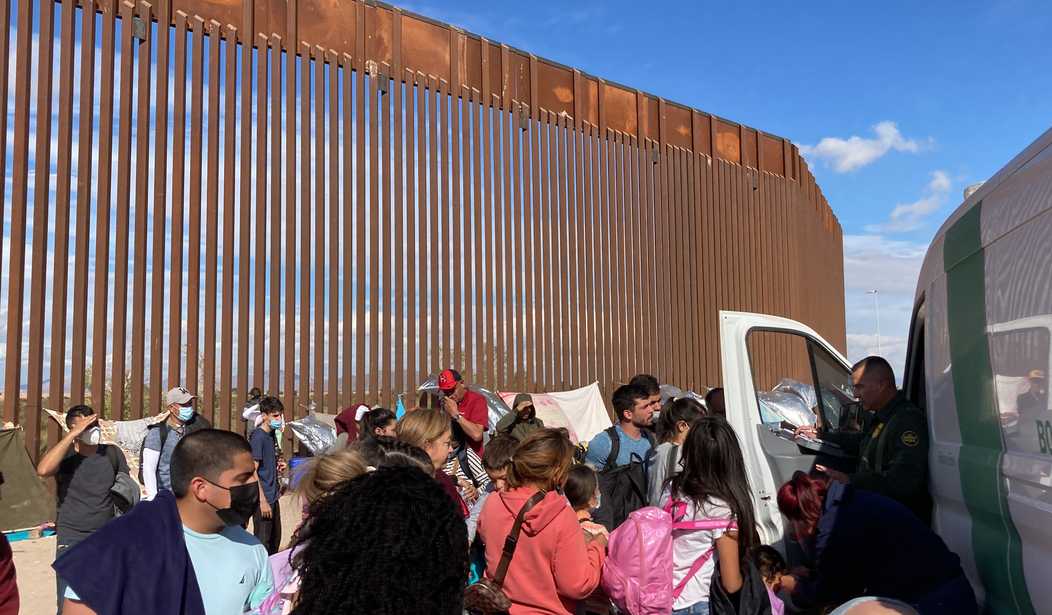I want to add a few notes to my Christmas weekend column on the Census Bureau's July 2021 state population estimates and what stories they tell about growth and decline in the first 15 months of the coronavirus pandemic.
THE IMMIGRATION BUST
The big news is about immigration. In the years from 2010 to 2019, the Census Bureau recorded an increase in "international migration" -- immigration, in layman's language -- of 873,000.
For the 15 months from April 2020 to July 2021, the corresponding number is only 257,000 -- down 71% from the average of the years from 2010 to 2019. Presumably, that does not include most of the additional illegal immigrants who have crossed the border and fanned out across the country due to Biden administration policies. The cutoff date is July 1, just five months into the administration.
The drop-off from the previous decade is enormous. It's even greater if you look back to the peak immigration surge that started in the 1980s and ended abruptly with the housing price collapse and sharp recession in 2007.
And there's also a big difference in immigrant destinations. In earlier decades, half of all immigrants typically headed to three states: California, Texas and New York.
In the plague year, they've headed elsewhere. The highest immigration increase as a percentage of the preexisting population in 2020-21 was in two dissimilar states: Massachusetts and Florida, followed by Washington, D.C.
Recommended
One can see in these numbers the increasing share of legal immigrants who are high-skilled people from East Asia and South Asia heading to university and medical school clusters in metro Boston, New York City and Washington, D.C. But it is not so on the West Coast. Massachusetts's immigrant increase (13,700) was essentially identical to California's (13,900), even though Massachusetts has about 7 million people and California has about 39 million.
The No. 1 and No. 2 destinations for 2020-21 immigrants were Florida (41,200) and Texas (28,500). Together, these states account for more than a quarter of the nation's immigration increase. Plague-year immigrants are evidently attracted by the same factors as plague-year domestic migrants: low taxes, vibrant private sector economics and a relative lack of COVID-19 restrictions.
The pattern has political implications. Latin American and Asian immigrants from the 1982-2007 surge turned out to vote heavily Democratic, and high-skill Asian immigrants since 2007 have done so as well.
But Latino voters, especially but not only in South Texas and South Florida, have trended toward Republicans in the Trump era. Polling shows that Latinos in the Lower Rio Grande Valley resent rather than identify with the illegal immigrants surging across the border.
And Florida may be seeing an influx of high-skill and anti-socialist refugees from new leftist governments in Argentina, Peru and Chile, as it already has from Venezuela and Cuba.
Where immigrants aren't going is also significant. Only 5% of the 2020-21 immigrant inflow was to California, and only 2% was to Illinois. Los Angeles and Chicago have lost their allure. And immigrants added less than one-tenth of 1% to the populations of the fast-growing Carolinas and Georgia and the slower-growing Midwest.
THE BIRTH DEARTH
The number of births in the 12 months up through July 1, 2021, was 3,582,000 -- 9% lower than the average in the years from 2010 to 2019.
You have to go back to 1979 to find a year with fewer births, and you can go back to the 1790 census and you won't find a year with fewer births as a percentage of the population (1.1%).
Birth rates are lowest in the six New England states and New England-founded Oregon on the West Coast. They are similarly low in Florida and West Virginia, with their elderly populations. In recent years, only a few states, such as Maine and West Virginia, have registered more births than deaths. In the April 2020-July 2021 period, 25 states did.
What states have the highest birth rates? Not California or New York, whose pre-2007 immigrants were prolific in recent times. In the plague year, their birth rates were below the national average.
The most prolific instead are heavily Mormon Utah, three sparsely populated states with mining and financial sectors (Alaska and the Dakotas) and Texas.
THE POLITICAL IMPACT
Politically, the 25 states carried by former President Donald Trump had 43% of the nation's population in the 2020 census, which ended on April 1. But they produced 44% of the nation's births and attracted 44% of its immigrants in the following 14 months, ending July 1, 2021. Even as Biden Democrats took over the government, the nation's demographics shifted marginally toward Republicans in the plague year.
























Join the conversation as a VIP Member